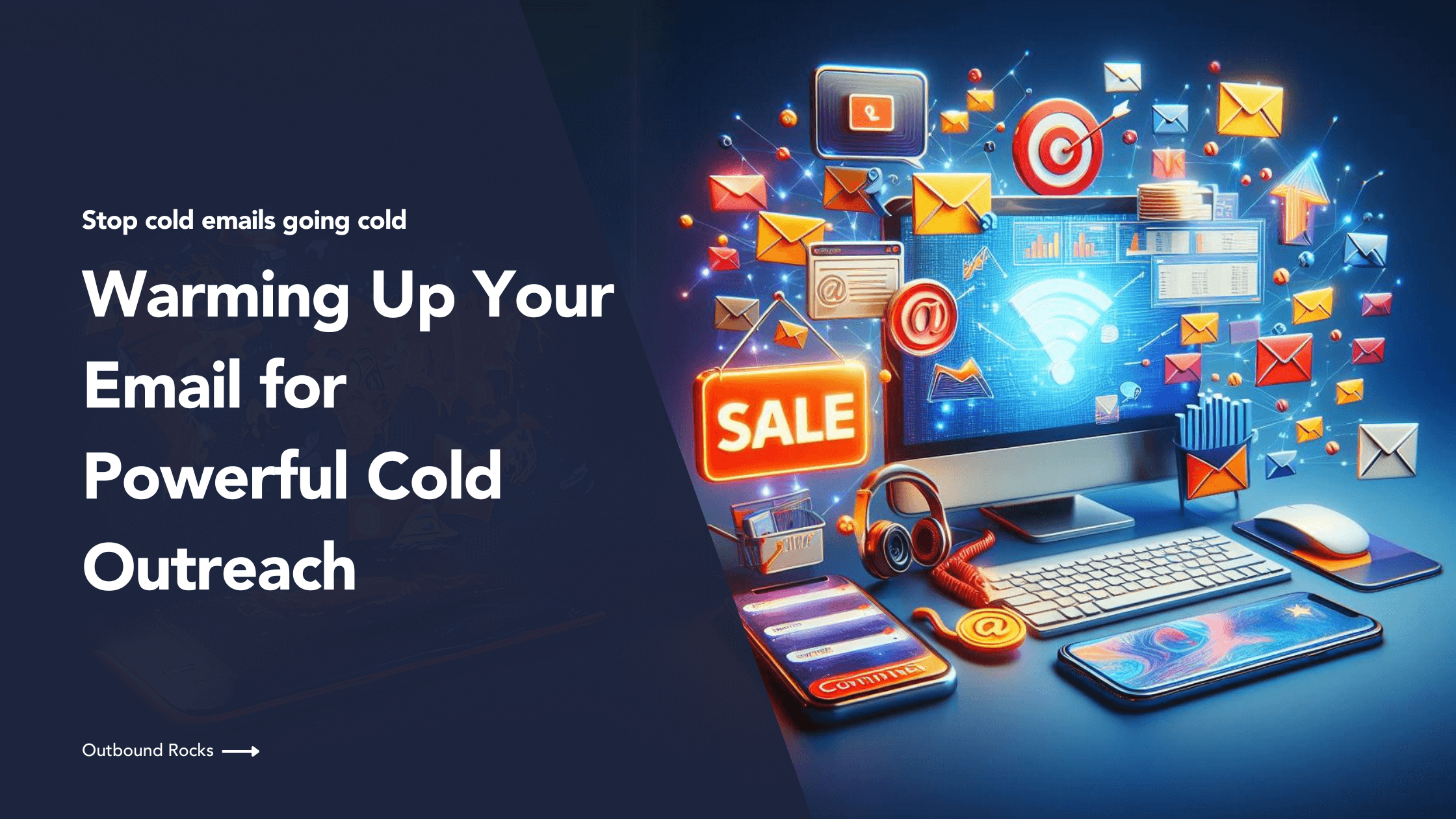You’ve crafted the perfect message, personalized each lead, and hit send. But wait… are your cold emails landing with a thud in spam folders instead of sparking inbox conversations?
Not to worry, there’s a simple solution: email warm-up.
In this article, we’ll break down the essentials – from defining an email warm-up to nailing the timing and duration.
Whether you’re a marketer, sales professional, or startup enthusiast, this article is your key to improving your email outreach.
What is Email Warm-Up?
Email warm-up involves gradually sending smaller volumes of emails to establish a positive sender reputation for a new or inactive email account.
This can include sending personalized emails to friends and family, engaging in relevant online communities, or using special warm-up tools such as Outbound Rocks that send low-risk emails on your behalf.
ℹ️
In essence, email warm-up acts as a proactive measure to optimize the chances that your cold outreach emails will be successfully delivered, opened and positively received by your target audience.
When Should You Warm Up?
The ideal time to warm an email account is right after you add it to your cold email software and before you launch a cold email campaign. This approach allows for a more effective cold email campaign because:
- The email account has already established a positive reputation with email service providers.
- As a result, the risk of being flagged as spam is reduced.
You should also consider warming your email account in these scenarios:
- When using a new email address: this is critical to establishing sender reputation and building trust with email providers. New accounts haven’t proven themselves yet, so starting with a gentle send volume helps avoid being flagged as spam.
- When reactivating an inactive email account: after a period of inactivity, your reputation can take a hit. Warming up helps to re-establish sending patterns and gradually rebuild trust with email providers, increasing your chances of successful delivery.
Here are some additional situations where warming up can be beneficial:
- Before launching a large cold email campaign: it is important to complete technical setups like SPF, DMARC, DKIM, and MX records ahead of time. That way, if there are deliverability issues that show up in the sent warm-up email metric, at least you’ll know it’s not due to a lack of technical setup.
- When switching email service providers: the new provider might not have your sending history, so warming up reassures them you’re legitimate.
- If you’ve experienced previous deliverability issues: warming up can help repair a damaged reputation and improve future email deliverability.
How Long Should You Warm Up an Email Address?
The ideal length of time to warm up email depends on several factors, including
- Email Service Provider (ESP): different ESPs have different risk thresholds and may require longer or shorter warm-up periods. Check with your ESP for specific recommendations.
- Start sending volume: starting with a lower volume and gradually increasing it takes longer, but minimizes the risk of triggering spam filters.
- Desired send frequency: if you are targeting high volume campaigns, a longer warm-up period is critical. Lower volumes may require less time.
- Activity level of the email address: restarting an inactive account typically requires a longer warm-up than a brand new account.
Based on our experience, we can confirm:
- The ideal warm-up period for an email address is typically two to four weeks.
- During this time, gradually increase the volume of emails sent while monitoring recipient engagement. This gradual approach helps build trust with ISPs and improves email deliverability.
Why warm up an email account before cold outreach?
To make cold email marketing profitable, a salesperson or marketer must send thousands of outreach emails.
And let’s face it, this is not an easy task.
Achieving better email deliverability and avoiding spam markings due to mass email sends requires a strategy with massive email accounts.
ℹ️
For example, sending 1,000 cold emails requires about 20 email accounts from 7 different domains, while sending 10,000 cold emails requires 200 email accounts and 70 domains.
This is where cold email tools with built-in warming capabilities come into play. Tools like Outbound Rocks help warm up massive email accounts by gradually increasing their sending volume while maintaining the sender’s reputation.
It also ensures that your cold emails are delivered to recipients’ inboxes, increasing the overall effectiveness of your outreach campaigns.
Conclusions
If you want to build trust with email service providers and ensure that your cold emails reach recipients’ inboxes, fill out the form below and we will contact you shortly!
